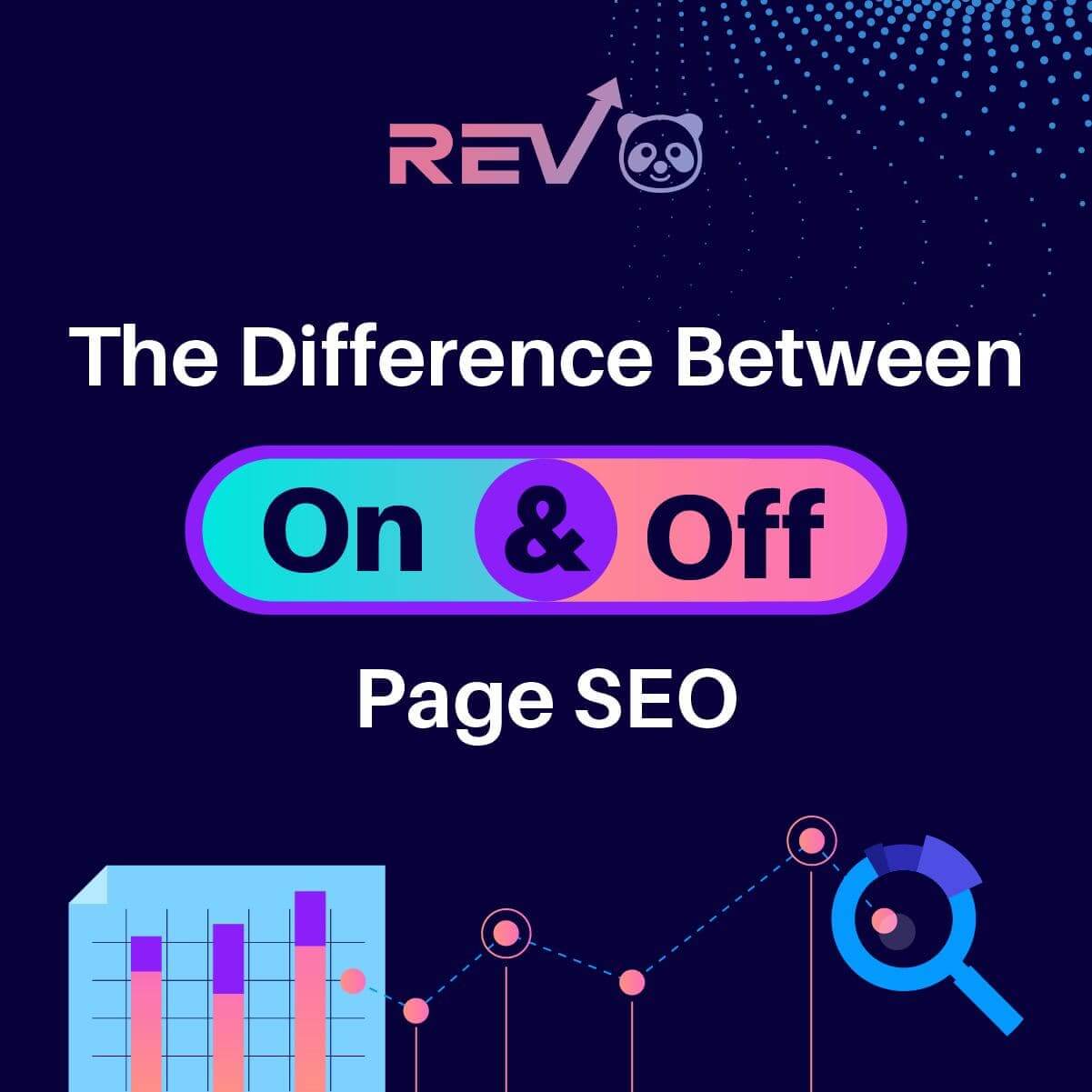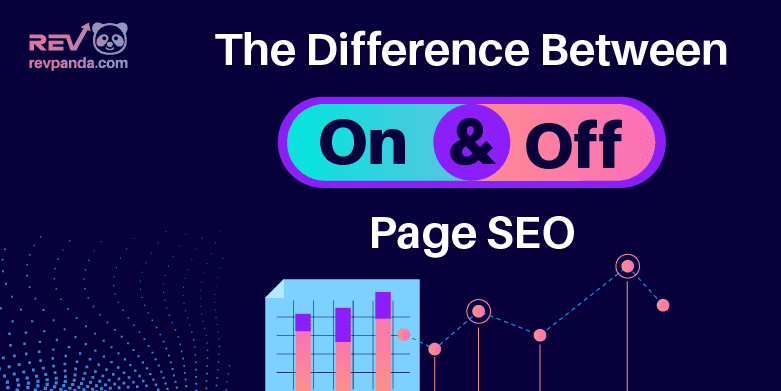
BLOG
On-Page SEO and Off-Page SEO
Table of contents
Click on a title to jump to a section

You need multi-dimensional SEO techniques that include both On-Page and Off-Page optimization. An oversimplified one-dimensional strategy does not cut it anymore.But there’s a catch! Not every factor is equally important. While some are absolute must-haves, others might not have a prominent effect in your industry. If you have a new website and are trying to identify the factors that need your immediate attention, we have got a treat for you – a list of Google ranking factors that every amateur must know.
On-Page SEO Factors
Let’s start with the basic rules of search engine optimization. You need to strategically place keywords in the content, meta description, and title tags, optimize meta descriptions to help search engine robots find your website and use alt tags and HTML code.
But as important as these might be, search engines are evolving beyond simple text analysis to rank websites. Therefore, SEO should be seen more as an organic ecosystem instead of an SEO tool simply designed to improve traffic.
Here are five factors you must keep in mind to improve visibility.
Content
While content quality most certainly takes precedence, simply stuffing a website with random content doesn’t do much for domain authority. Understanding user intent is crucial for increasing the number of website visitors. In fact, Google has been focusing on neural matching for the past few years. How to optimize content, you ask?
For starters, shortlist the intention of every target keyword (informational, promotional, navigational, etc.). Analyze keyword relevance to find out what type of content currently ranks. Research semantic similarity to the search term and optimize content accordingly.
Technical SEO
Often considered the foundation of search engine optimization, every SEO strategy revolves around Technical SEO. For starters, your website must be crawlable to help search engines access the sitemap. The practice of internal linking is crucial here. Next up, an HTTPS secure website ensures a safe browsing experience. It’s one of Google’s soft ranking factors, meaning it cannot override other ranking factors.
Cleaning the URL is just as vital, as broken links not only affect usability and site speed but also hamper indexation. Status code issues are common after a site migration. A clean URL structure with status 200 codes is a positive sign. Contact your hosting partner in case of errors affecting the link.
User Engagement
Websites today are designed for both humans and robots. When optimizing a site for humans, you must look at things from a visitor’s perspective. After all, user engagement is a key SEO factor that defines your search rankings on search engine results pages. There are a few interesting tools to make your life easy.
For starters, Pages per Session identifies the average number of category pages a visitor views before leaving the site. This metric is ideal for identifying how interesting and engaging your website is. Analyze pages with a high bounce rate and optimize content to encourage audiences to stick around for longer periods.
Responsive Web Design
In the age of smartphones and tablets, it’s essential that your site is mobile-friendly. Google’s mobile-first strategy means site responsiveness is a vital factor when determining domain authority. In fact, it’s a primary ranking factor!
When designing a website, it’s important to keep the device’s dimensions in mind. Focus on minifying on-site resources to improve landing page load speed, and don’t forget to tag web pages with AMP codes from your preferred CMS.
Core Web Vitals
Google’s Core Web Vitals are a new ranking signal that helps analyze a website’s performance and user experience by studying the key metrics, and suggesting improvements based on the findings. They measure interactivity, page speed, and content stability to determine a website’s usability.
Each core vital represents a novel section of the usability spectrum and reflects user experience in real-time. The metrics, however, aren’t set in stone, meaning the factors might change in the near future. But, for now, the core vitals only consider the three factors listed above.
Off-Page SEO Factors
While On-Page SEO consists of things under your direct control, Off-Page SEO includes external ranking factors like blog posts, press releases, link building, social media exposure, and more. Here’s a list of the top 5 Off-Page SEO techniques to help direct traffic to a web page.
Pay-Per-Click Advertising
While PPC isn’t a direct part of SEO, it’s vital for getting new sites off the ground. An effective PPC strategy can boost visibility, making it a key part of your SEO efforts. If your site has good content, SEO experts recommend PPC for gaining traction. Once traffic picks up, focus on building backlinks and similar ranking factors.
Local SEO
Online review sites like Yelp, Google My Business, Glassdoor, and more can boost local business since they take your location into consideration while determining search engine rankings. For instance, if you own a restaurant, getting your business listed on local search directories will substantially improve visibility and the quality of results.
Domain Authority
A vital metric that determines the reliability of your website, search engines rank sites on a scale from 1 to 100. The analysis includes certain factors like the domain name, past performance, number of backlinks, and more. By following a holistic SEO checklist, make sure your website is technically sound and is viewed as an authority in the field.
Guest Blogging
Similar to blogs, guest posting can help gain quality backlinks and attract organic visitors to your site. Reach out to fellow professionals in your field, and if your posts are approved, you get instant access to an untapped audience. Make sure to deliver relevant, actionable, and fresh content since nobody likes spammy text.
Videos and Infographics
Augmented reality is hugely popular nowadays, with social media moguls Instagram, Snapchat, and Facebook incorporating motion visuals through filters. Build your brand name and reputation using a similar technique and promote your website on Pinterest, Flickr, Vimeo, YouTube, Photobucket, and other platforms.
On-Page SEO vs Off-Page SEO
On-Page and Off-Page SEO work in tandem to improve your website’s SERP rankings. By controlling what you create – high-quality, relatable, and informative content – and optimizing the factors at your disposal – On-Page SEO – you can improve authority, earn backlinks, and influence other key factors of Off-Page SEO.
Keyword Research and Content Creation
Leverage Pay-Per-Click Marketing
Repair Broken Links and Create a Sitemap
Build Backlinks and Domain Authority
Improve Page Load Speeds and User Interface
Get Listed on Local Search Directories
Optimize Title Tag and Meta Description
Look for Guest Posting Opportunities
Check Alt Text and Fix SSL/HTTPS Errors
Improve Social Media Presence
Conclusion
Search marketing has been one of the most effective promotional channels for quite some time. Your business must be at the forefront of SERP results for related search queries to gain maximum hits. Creating helpful, engaging, and sharable content, building a user-friendly website, and adopting a multi-channel promotion strategy, together with an effective link building campaign, will improve visibility and conversion rate. At the end of the day, SEO is a dynamic industry, and we must look at it from a holistic POV to survive Google’s ever-changing algorithms.
FAQ

